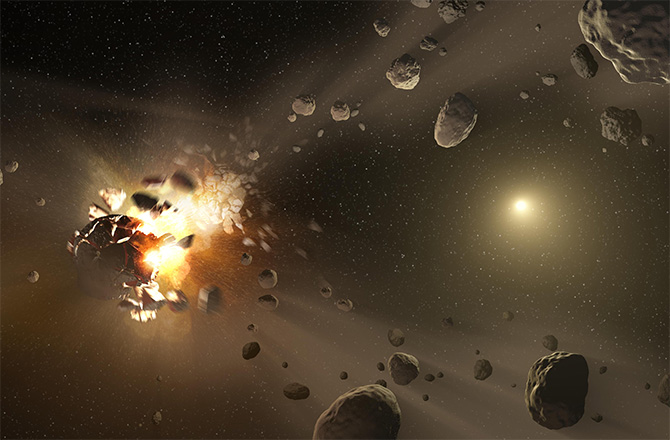
© Discovery News
A well-known meteorite that was the first to be tracked by ground-based cameras as it blasted through the Earths atmosphere and quickly recovered at its Australian fall site has been identified as a geological oddity.
The Bunburra Rockhole meteorite was recovered from the Nullarbor Plain in Western Australia in 2007 and, after recent isotopic tests, its basaltic composition started a cosmic forensics investigation that has led researchers to believe it originated from an asteroid that no longer exists.
"This (meteorite) has a particular composition - which makes us think that it comes from a different body that has not been sampled before," said
geochronologist and geochemist Fred Jourdan, associate professor at Curtin University, Perth. Jourdan and his team's work has been accepted for publication in the journal
Geochimica et Cosmochimica Acta.
Most basaltic meteorites are thought to originate from the massive 500-kilometer wide asteroid (
or protoplanet) Vesta that occupies the solar system's Main Asteroid Belt. Basaltic rock forms from volcanic activity and it is believed that early in Vesta's formation 4.5 billion years ago, vulcanism extinguished the majority of Vesta's heat. Therefore, any basaltic meteorites originating from Vesta can be dated to 4.5 billion years old.
But through isotopic analysis of the Bunburra Rockhole specimen, the basaltic rock's dateline was reset around 3.6 billion years ago.
"There's no way, with our knowledge of the current laws of physics, that we would have vulcanism at this time because all the heat is long gone from the asteroids," said Jourdan.
This can mean only one thing. As volcanic activity in large asteroids would have long been extinguished, the Bunburra Rockhole meteorite must have originated from an energetic asteroid collision, an event that
would have been common around this time.
"It (the unknown asteroid) was born 4.5 - 6 billion years ago and then it probably got shattered 3.6 billion years ago."
As there are no other known meteorites with this specific chemistry, Jourdan pointed out that meteorites like Bunburra Rockhole must be very rare and its parent asteroid was likely completely destroyed by that single collision event.
As director of Curtin University's Argon Laboratory, Jourdan vaporized a small sample of the meteorite and analyzed the argon gas released in a spectrometer. By looking at the ratio of Argon 39 and Argon 40 (two Argon isotopes that contain different numbers of neutrons in their nuclei), a timeline can be revealed, allowing Jourdan to see when the asteroid was destroyed and the Argon dateline was 'reset' by this catastrophic collision.
Until now the only basaltic meteorites known came from asteroid Vesta. Through this valuable isotopic analysis, we now know that there were more basaltic asteroids out there. And one of them was probably completely destroyed 3.6 billion years ago, providing a unique insight to our solar system's ancient and violent past.
Source: Phys Org

Reader Comments
to our Newsletter